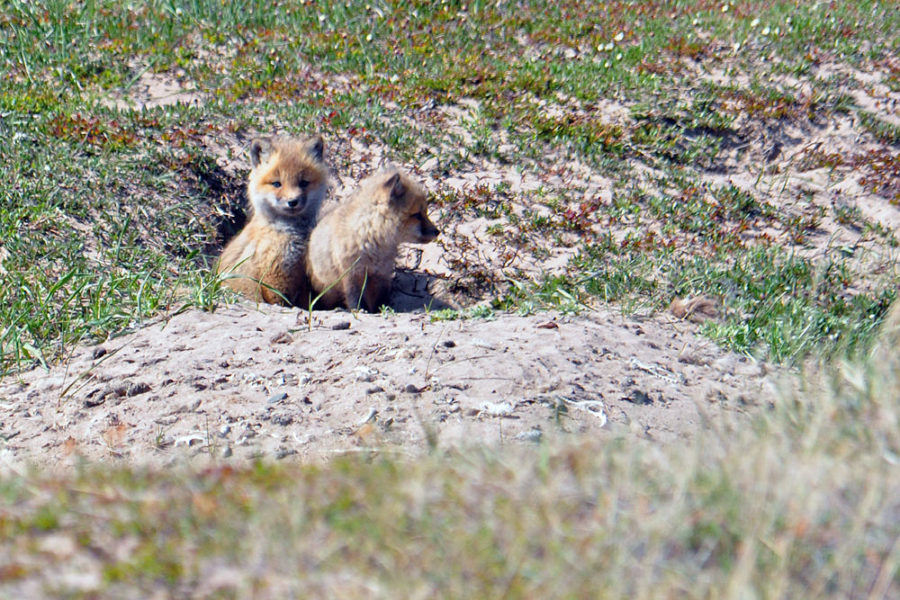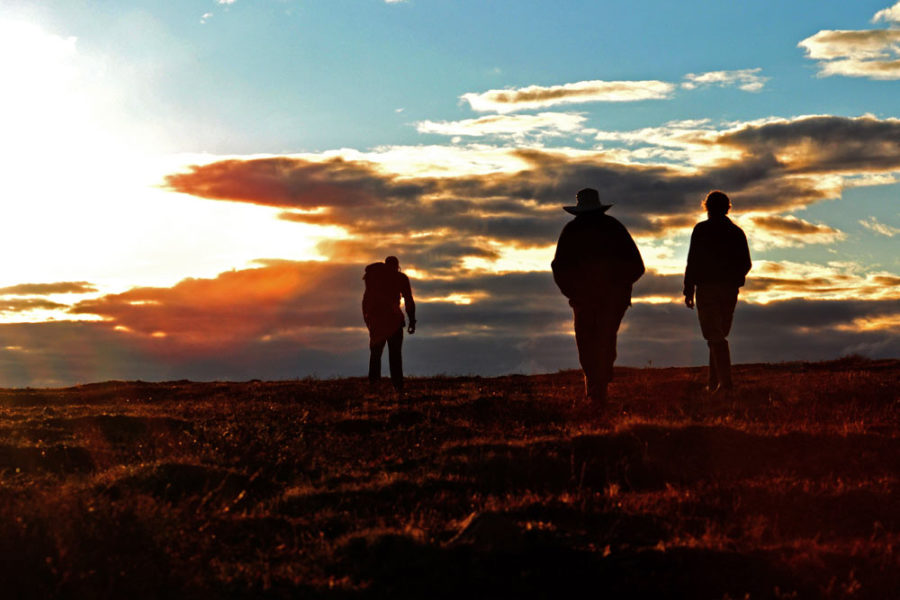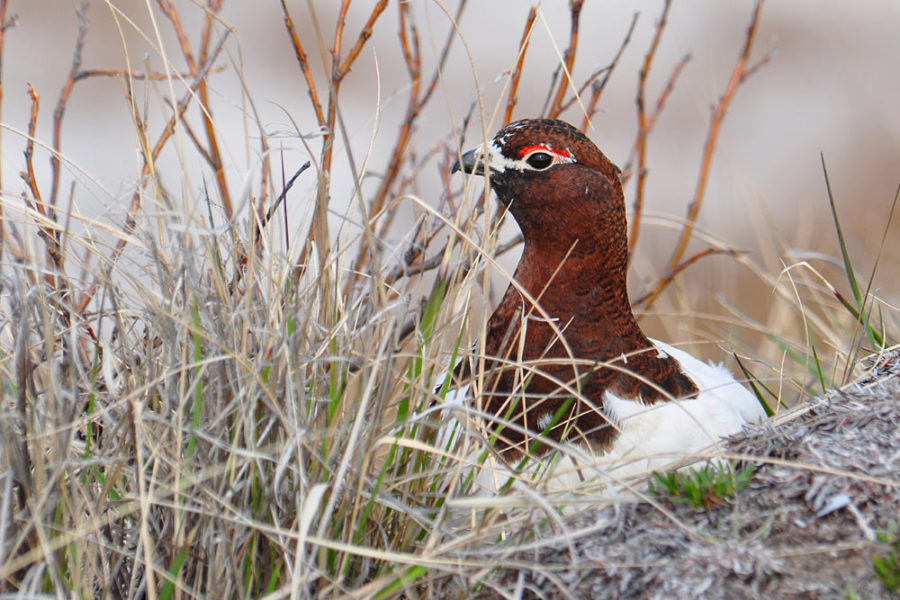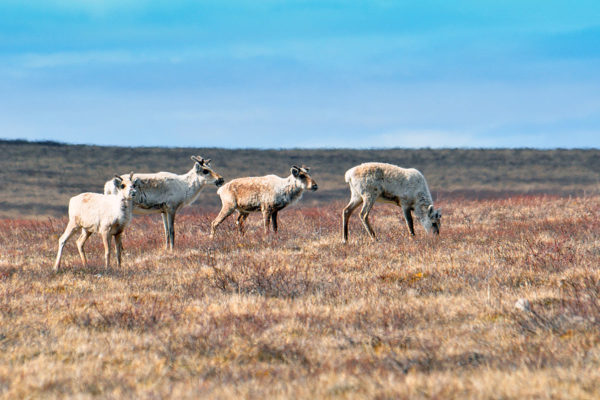Guided Rafting Expeditions on the Burnside River in Nunavut
Join us for an incredible rafting adventure on the Burnside River – you are practically guaranteed top wildlife viewing and a classic Arctic adventure! The Burnside River is a classic tundra river flowing into the Arctic Ocean at Bathurst Inlet. Isolated and rugged, the river offers rafters easy Class I and II whitewater and world-class wildlife viewing, including caribou, muskox, grizzly, Rough-legged Hawks, Golden Eagles, Gyrfalcons and the occasional Arctic wolf.
- Best viewing of the Bathurst caribou herd migration in June
- Dramatic landscape, excellent hiking, wildlife and wildflowers
- Opportunity to see more than 20,000 caribou
- Several Inuit archeological sites along the river
Because this is an area of continuous permafrost, the tallest plants—dwarf willow and alder—are rarely more than a metre high (3 feet). Several varieties of lichen and moss carpet the ground along with species of wild flowers and berries. The variety and number of wild flowers in the Burnside Valley is vast, numbering more than 125 different common and showy plants found along the river.
The Burnside originates at Contwoyto Lake. It then flows across the Contwoyto Plateau, which rises out of the Precambrian Shield. This plateau has an average elevation of 460 metres (1500 feet) and is characterized by granite boulder till mixed with sand. Eskers are common features on this rolling landscape. The hills above the river valley provide impressive views of the surrounding countryside. Near the ocean, the Burnside enters the Wilberforce Hills region, characterized by deep river valleys, spectacular cliffs and canyons. This is especially evident along the final few kilometres of the river.
The Burnside area has been well used by the Inuit for centuries. Their passage through this area is marked by numerous archaeological sites along the river—tent rings and graves can be seen at several locations. The most important known site is on the tiny Island of Nadlak, located just downstream from Kathawachaga Lake. Nadlak in Inuktituk means “place where the deer cross.” Here, in the summer of 1985 and 1986, the National Museum of Civilization unearthed more than 40,000 segments of caribou antlers that formed the framework for several winter homes used by a semi-permanent group of Copper Inuit. These people were driven south from the Arctic Ocean during the mini-ice age that took place between the early 1500s and the 1800s. Needles and tools, more common to the Dene people who lived south of the tree line, were also found at the site, leading archaeologists to conclude that the Dene had a trading system in place. After the cold spell, it is believed that the Inuit returned to Bathurst Inlet. Today, there are only about 25 people living in the community of Bathurst Inlet and another 60 at Bay Chimo, 100 kilometres to the north.
Sir John Franklin explored the area in 1821 and 1822. With a party of 20 men, he travelled along the river, naming Belanger rapids after one of his crew. It wasn’t until 1920 that a permanent settlement was established at Bathurst Inlet. That year, the explorer Charles Klengenburg wintered his crew and schooner at the inlet. Fourteen years later the Hudson’s Bay Company (HBC) established a trading post there and later, in 1929, the community eventually grew around a mineral exploration site established in the area. In 1964, the HBC pulled out of Bathurst Inlet Lodge.
The Inuit families living in the Burnside community today have chosen an isolated and traditional way of life. In the summer months, the community, in conjunction with Tricia and Glen Warner from Yellowknife, operate Bathurst Inlet Lodge. The lodge is well known worldwide as a naturalist’s retreat.





















